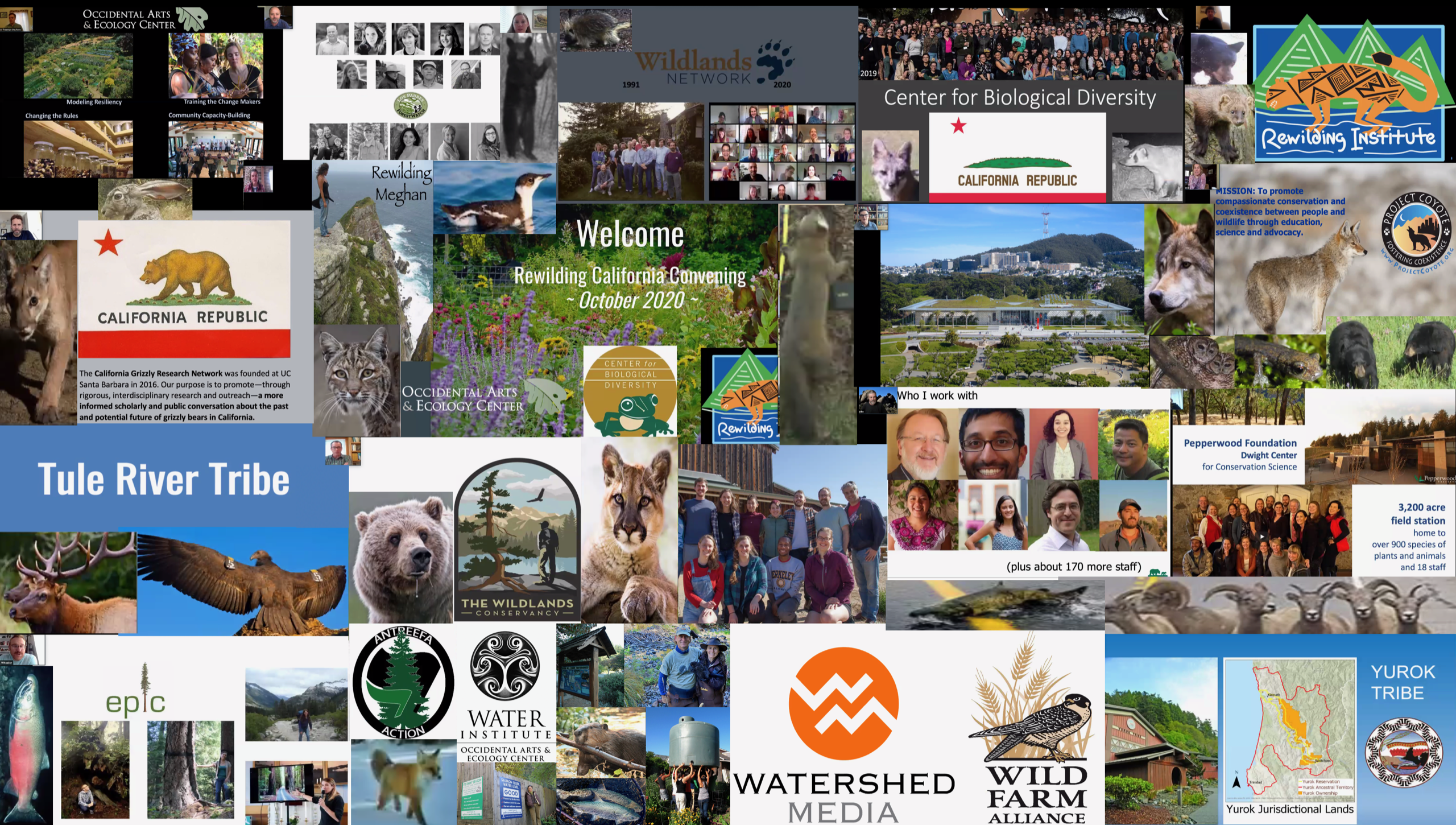In September, OAEC, along with the Center for Biological Diversity and The Rewilding Institute, convened a virtual Rewilding California meeting that, for the first time ever, brought together many of the leading advocates, academics, and practitioners of rewilding, including Tribal nations in California, across the general California geography, to focus on the recovery of terrestrial and riverine species. We were particularly interested in critically important species for whole ecosystem health, such as beaver, condor, pronghorn, elk, wolves, mountain lions, salmon, grizzly bears, among others.
Facilitated by OAEC staff, the overall goals of the convening were to support a shared, inclusive, and courageous vision for what rewilding is and can be in California. Sessions included: What Is Rewilding?; Who Is Missing?; Courageous Visions for Rewilding in California; Successes & Challenges to Rewilding in California; ESA + CESA Towards Rewilding in California; What’s Up With Returning Grizzly Bears to California?; Tribal Sovereignty & Rewilding; Assessing The Changing Landscape for Rewilding Work in CA Towards Creative Opportunity; and more. Check out the participating organizations, tribes, and universities below. This group will convene again in-person towards the end of 2021 (or when safe) to dive deeper into what collective action towards rewilding across California can look like.
Organizations/Tribes/Universities represented:
- The Wildlands Conservancy
- California Academy of Sciences
- Center for Biological Diversity
- Wildlands Network
- Tule River Tribe
- Yurok Tribe
- UC Santa Barbara
- UC Berkeley
- The California Grizzly Research Project
- Project Coyote
- National Parks Conservation Association
- North Bay Bear Collaborative
- Environmental Information Protection Center
- Pepperwood Foundation
- Los Padres Forest Watch
- The Rewilding Institute
- Occidental Arts & Ecology Center
What is Rewilding?
Rewildling means helping missing native species, particularly top carnivores and other keystone species, return; securing core conserved habitat areas with connectivity between them; and allowing natural processes and cycles, like fire, water, and carbon, to restore functional, stable ecosystems. Practically, this includes active restoration techniques, passive recovery, and ongoing monitoring, at small to large scales depending on the project and the species. In addition, rewilding success requires strategic planning, organizing, and advocacy to make the work for wildlife politically possible and community supported. In a time when a survivable planet is not a given, ecological restoration is a necessity. Working together with our animal kin and the natural processes that enable life to exist on this planet can not only stop further extinction and collapse, but restore fecundity, beauty, and stability to our one home.
California, as much as anywhere in the U.S., has done remarkable work on rewilding over the past couple decades. There are many fantastic and effective organizations, tribes, and universities all over the state working to research, protect and restore specific species and geographies. Furthermore, while far from perfect, California’s local and state agencies and governments are generally more open to rewilding efforts than are those elsewhere in the U.S. Yet, with all this good work and possibility in California, as the scope and scale of climate chaos increases, we are called to bring together these groups to work more strategically and collaboratively toward bolder visions, clearer plans, and more rapid action.
Check out Brock Dolman’s excellent presentation from the convening on Process-Based Rewilding!

We wish to thank Quincey and Dan Imhoff and Invoking The Pause for generous support of this convening.






